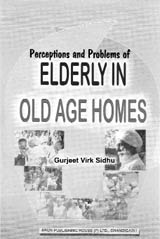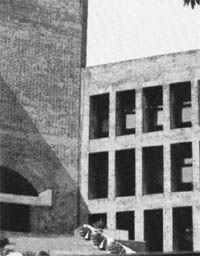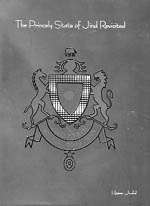|
Short Takes
Elders, empires and
education
Reviewed by Randeep Wadehra
Perceptions and
Problem of Elderly in Old Age Homes
by Gurjeet Virk Sidhu
Arun Publishing House. Pages: 184. Rs. 316
 The aged in India have
seldom been on the radar of our researchers and policy makers. Little
has been done to understand their problems, let alone arrive at
solutions. For long, the argument has been that in our society the aged
are well looked after by their respective family members and hence are
not a part of the social problem. This myth stands debunked now. The old
familial and social structures have more or less disintegrated. With
frenetic transformation in the country’s socio-economic and
demographic profiles the traditional joint family has been replaced with
the nuclear one – and single-parent family becoming more conspicuous.
This leaves the old people extremely vulnerable to economic hardships
and other deprivations. Sidhu says that by 2030 the elderly population
in the world would be about 1.4 billion, of which a significant number
would be in India – in 2001 it was 29 million and growing. Obviously,
there is a need for the government to formulate a structured approach
towards institutionalising care for this section of the population that
has already contributed its share to the nation’s progress and now
needs to be provided with dignified existence in its twilight years. The aged in India have
seldom been on the radar of our researchers and policy makers. Little
has been done to understand their problems, let alone arrive at
solutions. For long, the argument has been that in our society the aged
are well looked after by their respective family members and hence are
not a part of the social problem. This myth stands debunked now. The old
familial and social structures have more or less disintegrated. With
frenetic transformation in the country’s socio-economic and
demographic profiles the traditional joint family has been replaced with
the nuclear one – and single-parent family becoming more conspicuous.
This leaves the old people extremely vulnerable to economic hardships
and other deprivations. Sidhu says that by 2030 the elderly population
in the world would be about 1.4 billion, of which a significant number
would be in India – in 2001 it was 29 million and growing. Obviously,
there is a need for the government to formulate a structured approach
towards institutionalising care for this section of the population that
has already contributed its share to the nation’s progress and now
needs to be provided with dignified existence in its twilight years.
Apart from providing us
with illuminating statistics regarding the plight of the aged, Sidhu has
given thought-provoking case studies. This book is a must for our policy
makers and think-tank.
Brick by Red brick
by T.T. Ram Mohan
Rupa & Co. Pages: xiv+281. Rs. 495
 After India gained
independence, building of educational institutions became a top priority
because the educational system bequeathed to India by the British was
good enough only to churn out clerks. India needed a system that would
groom leaders in different walks of life. Therefore, setting up of
centres of excellence acquired urgency. But persons of calibre and
vision were needed to head them. Luckily, India had its share of such
personalities. After India gained
independence, building of educational institutions became a top priority
because the educational system bequeathed to India by the British was
good enough only to churn out clerks. India needed a system that would
groom leaders in different walks of life. Therefore, setting up of
centres of excellence acquired urgency. But persons of calibre and
vision were needed to head them. Luckily, India had its share of such
personalities.
This book narrates the
story of the Indian Institute of Management, Ahmedabad – arguably the
most prestigious institution of its kind in the country and among the
best in the world. It focuses on the pioneering work done by Ravi
Matthai, to whom goes the credit for making IIM-A what it is today. He
was entrusted with the job by Vikram Sarabhai, Kamla Chowdhry,
Kasturbhai Lalbhai and Prakash Tandon. The Ford Foundation, the Harvard
Business School and the MIT, too, were actively involved in varying
capacities. While underscoring Matthai’s commitment to turning IIM-A
into a world- class institute, the narrative provides an account of
various events and personalities associated with giving it its present
stature – an autonomous centre of excellence. This tome must be on
your bookshelf.
The Princely State of
Jind Revisited
by Rajeev Jindal
Gulab Publications. Pages: 134. Rs. 500
 After Aurangzeb’s death
in 1707, turmoil hit the Mughal Empire. In Jind, Jats, Rajputs, Ranghars
and Ahir chiefs stopped paying taxes/tributes to the Delhi Durbar.
`A0Gajpat Singh, a great grandson of Phul, the founder of the Phulkian
Misl, one of the 12 confederacies of the Sikhs in the 18th century, took
advantage of the above situation and joined in the attack of the Sikhs
on the province of Sirhind in 1763 in which Zain Khan, the Afghan
governor of the province, was killed. Gajpat Singh occupied a large
tract of land comprising Jind and Safidon as his share of the spoils. He
made Jind his headquarters and built a large brick fort there. Thus was
formed the princely state of Jind. This book dwells in detail upon the
history of the princely state, its various rulers from medieval to
modern times. However, it requires diligent and expert proofreading and
editing. After Aurangzeb’s death
in 1707, turmoil hit the Mughal Empire. In Jind, Jats, Rajputs, Ranghars
and Ahir chiefs stopped paying taxes/tributes to the Delhi Durbar.
`A0Gajpat Singh, a great grandson of Phul, the founder of the Phulkian
Misl, one of the 12 confederacies of the Sikhs in the 18th century, took
advantage of the above situation and joined in the attack of the Sikhs
on the province of Sirhind in 1763 in which Zain Khan, the Afghan
governor of the province, was killed. Gajpat Singh occupied a large
tract of land comprising Jind and Safidon as his share of the spoils. He
made Jind his headquarters and built a large brick fort there. Thus was
formed the princely state of Jind. This book dwells in detail upon the
history of the princely state, its various rulers from medieval to
modern times. However, it requires diligent and expert proofreading and
editing.
|